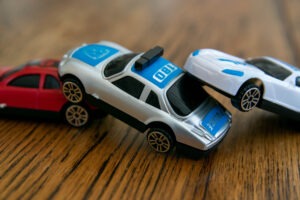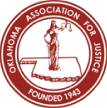
Car accidents can result in devastating injuries and property damage, regardless of the number of cars involved in a collision. However, more vehicles can certainly increase the risks and scope of the damage. Usually, these types of car accidents stem from a single event that creates a cascading effect, with the potential for many additional vehicles to become “piled up” in the collision.
The financial burden of multi-car crashes is often substantial, including medical expenses, lost wages, vehicle repairs or replacement costs, and other damages. If you’ve been involved in a pile-up accident, seeking expert advice from an experienced Oklahoma pile-up accident attorney is critical. At BDIW Law, we can help you understand your rights and build a strong claim to secure the compensation you are entitled to.
Factors Contributing to Pile-Up Accidents
Also known as chain reaction accidents or multi-car collisions, pile-ups occur when three or more vehicles are involved in a single accident. Many factors and circumstances can lead to a pile-up accident. While every collision is unique, a few common scenarios may increase the risk of a multi-car collision.
Some factors that often contribute to pile-up accidents include:
- Adverse weather conditions. Poor weather conditions, such as heavy rain, fog, or snow, can significantly reduce visibility and create slippery road surfaces. In these cases, determining liability becomes more complex as multiple drivers may be involved due to reduced reaction times and difficulty controlling their vehicles.
- Rear-end collisions. When a driver rear-ends another vehicle, the initial collision can trigger a chain reaction if subsequent vehicles cannot stop in time. This often creates a situation where many cars become tightly packed together, bumper-to-bumper, in a single traffic lane.
- Sudden lane changes. If a driver makes an abrupt lane change without signaling or checking blind spots, it may result in collisions with nearby vehicles. This sudden maneuver may lead to a pile-up, as other drivers who attempt to avoid the initial collision may be unable to do so in time.
- Distracted driving. Distracted driving is driving while performing any other activity that diverts a driver’s attention away from the road, such as texting, talking on the phone, eating, or adjusting the radio. Distracted driving can lead to failure to react to traffic conditions, sometimes causing collisions with multiple vehicles.
- Driving under the influence. Operating a vehicle under the influence of alcohol or drugs impairs judgment, reaction times, and coordination. Intoxicated drivers pose a significant risk on the road and are more likely to cause or be involved in pile-up accidents.
Our Team Is Here To Assist You Every Step Of The Way.
SPEAK TO AN ATTORNEY TODAYDetermining Liability in Pile-Up Accidents
In typical car accident cases involving two drivers, determining fault is often more straightforward. However, in multi-car crashes, establishing fault becomes significantly more challenging due to the sheer number of vehicles involved and their complex interactions.
Proving fault in a multi-car crash requires a thorough investigation by law enforcement, insurance companies, and legal experts.
Factors such as witness statements, physical evidence at the scene, vehicle damage analysis, and road conditions are considered. However, due to the chaotic nature of multi-car collisions, it can be difficult to determine the exact sequence of events and assign blame to a specific driver.
Comparative Fault Laws
Comparative fault, also known as comparative negligence, is a legal principle adopted by many jurisdictions, including Oklahoma, to address situations where multiple parties share responsibility for an accident. In Oklahoma, comparative fault laws aim to divide liability fairly based on each party’s degree of fault or contribution to the incident.
Oklahoma Statutes §23-13 describes a modified form of comparative fault known as “modified comparative negligence” is followed. Under this rule, an injured party can still seek compensation for their damages if their fault is less than 51%.
However, the compensation awarded is reduced proportionately to the injured party’s assigned percentage of fault. These laws frequently come into play in pile-up accident cases.
Uncovering the Role of Each Driver
Let’s look at an example to understand comparative fault in the context of pile-up accidents. Suppose one driver was driving the speed limit and properly following traffic laws. Then, another driver abruptly changed lanes without signaling, causing a collision with the first driver. Finally, a third driver, speeding and unable to stop in time, collided with the other two vehicles, creating a three-car pile-up.
In this scenario, the court may assign percentages of fault to each driver based on their actions. For instance, if it is found that the first driver was not at fault, but the other two drivers were equally responsible for the incident, they may each be assigned half of the total damages. In contrast, the first driver is not held liable for any damages.
It quickly gets confusing, which is why we recommend you talk to an experienced car accident lawyer from BDIW Law today about your case.
Legal Considerations in Pile-Up Accidents
When establishing liability in pile-up accidents, various legal aspects come into play. After the accident, drivers typically file insurance claims, and insurance companies assess liability based on evidence like police reports and witness statements. Comparative fault principles are often applied, attributing percentages of liability to multiple parties involved.
Legal disputes and litigation can arise if settlements cannot be reached, requiring the court system to resolve differences. Expert witnesses, such as accident reconstruction specialists, may provide testimony to reconstruct the accident and establish liability.
Navigating these legal aspects can be complex and overwhelming for victims. The best approach is to seek guidance from an experienced Oklahoma attorney specializing in personal injury and pile-up accident cases.
Contact the Experienced Pile-Up Accident Attorneys at BDIW Law
Pile-up accidents often result in significant injuries, lost wages, pain and suffering, and property damages. If you’ve been involved in a pile-up accident, immediately contact the skilled pile-up accident attorneys at BDIW Law. We are here to provide reliable legal guidance and aggressive representation for your case.
Don’t attempt to manage this burden alone – take advantage of our expert knowledge and extensive experience with pile-up cases to protect your rights and seek the compensation you deserve. Contact us today to schedule your free and confidential case review.








